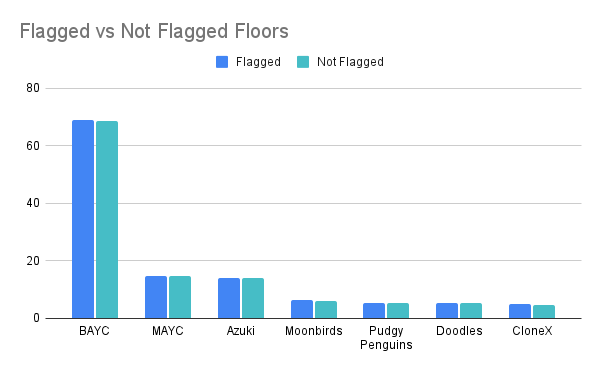To Flag or Not to Flag? When It Comes to Stolen NFTs, That is the Question
There has been an ongoing controversy brewing between marketplaces about how to deal with the problem of stolen NFTs. Through social engineering and phishing scams, bad actors can easily trick a user into signing a fraudulent contract link that instantly transfers their NFTs to a scammer’s wallet. Scammers then typically resell those stolen NFTs on secondary marketplaces like OpenSea, LooksRare and Blur. Given the immutable nature of blockchain transactions, there is nothing that can done to reverse the original theft of these NFTs.
As I’ve previously discussed, the resale of flagged NFTs comes with its own unique set of risks. Knowingly selling stolen “flagged” NFTs can potentially expose traders to criminal prosecution and/or civil lability. In response to this problem, OpenSea attempted to stop the resale of stolen NFTs to secondary buyers by way of a flagging mechanism. Basically, if an NFT holder filed a written report with OpenSea that the NFT was stolen, then OpenSea would flag that NFT and prevent any further resale of the token. The problem of course was that without an immediate freeze of the NFT, these stolen tokens would be bought and sold several times over before being flagged. This created a scenario in which bona fide purchasers were innocently buying NFTs, without any knowledge they were previously stolen, and then getting stuck holding “flagged” NFTs in their wallets.
Many digital asset purest in the space who follow the notion that “code is law” pushed back against OpenSea’s flagging policy and questioned whether NFTs lost to such scams can even be considered “stolen” in the first place. They argued that if a user is tricked or defrauded into signing a bad contract transaction, that they are to blame for losing the NFT to a scammer and that nothing can, or should, be done to reverse or flag these transactions. But the code is law defense does nothing in the IRL judicial system to shield those who transact in stolen NFTs from possible civil liability and/or criminal prosecution.
In the early days of OpenSea’s response to the stolen NFT issue, a problem very quickly emerged. Other marketplaces such as LooksRare declined to also flag NFTs reported stolen on OpenSea. This caused a great deal of confusion in the market because traders shopping for NFTs on LooksRare were forced to have to cross-reference the token ID on OpenSea to confirm if the NFT was flagged as stolen. This lack of conformity among marketplaces resulted in a great many innocent buyers getting stuck with flagged NFTs. Ultimately, LooksRare partially changed its policy on flagged and NFTs. LooksRare agreed to add a “not currently tradeable on OpenSea” label to flagged NFTs on its marketplace. Despite this disclaimer, LooksRare still allowed traders to freely buy and sell these OpenSea “flagged” NFTs on its marketplace.
OpenSea then further updated its “flagging” policy. NFTs that were formally reported as “stolen” to law enforcement would thereafter be immediately flagged and removed from the marketplace pending further investigation of the reported theft. Here’s a link to my previous blog post discussing OpenSea’s updated flagged NFT policy statement. https://defidefenselawyer.com/blog/5-opensea-announces-new-policy-for-dealing-with-flagged-nfts.html
In the absence of a consistent and uniform policy, NFT traders continued to use LooksRare, and other trading platforms, to trade NFTs that were blocked and flagged on OpenSea. This exploit resulted in essentially two floor prices for NFT projects--floor price for unflagged NFTs and a lower floor price for flagged NFTs within the same collection. Predictably, traders arbitraged this floor price disparity to reap gains.
Today, the NFT trading marketplace Blur announced that “Blur and @LooksRare will no longer show third party flags in the UI by default.” Blur maintains that “flags hurt end users more than they help.” Blur added that “flags can still be enabled in the View Settings on the collection page if desired.” “They won’t show as flagged by default. If you want to see the flags, you can still enable them in the view settings.” Although presently “flagged items sill cannot sell into bids on Blur regardless of whether they are turned on in the View Settings or not” the marketplace did hint this might change “in the near future” and that accepting bids on flagged NFTs is “definitely on the table.”

Later the same day, Blur updated its position on “flagged NFTs stated that “The price difference between NFTs with and without third party flags has disappeared. As a result, third party flag restrictions will be removed from Blur bids in 6 hours at 5:30PM PT, 8:30PM ET, 9:30AM HKG.”



It will be interesting to see what ,if anything, OpenSea does in response to Blur’s recent announcement. In the meantime, NFT traders continue to navigate a patchwork of inconsistent policies as trading platforms continue to grapple with the dilemma of to “Flag or Flag Not?”



